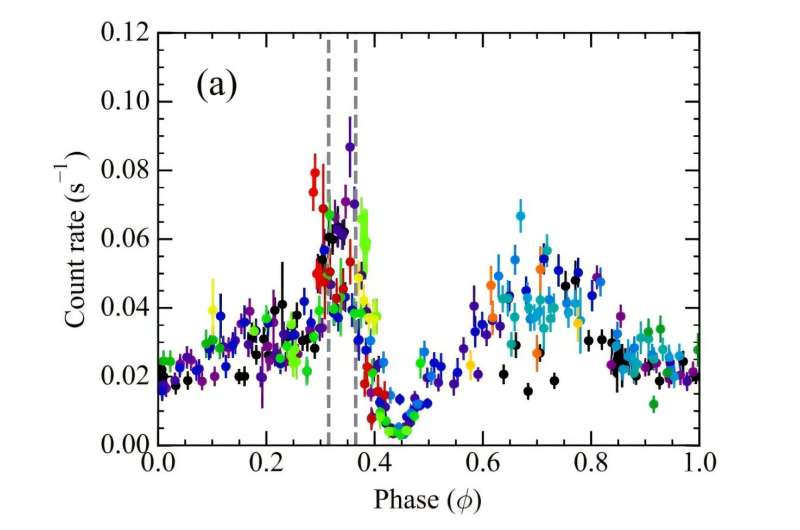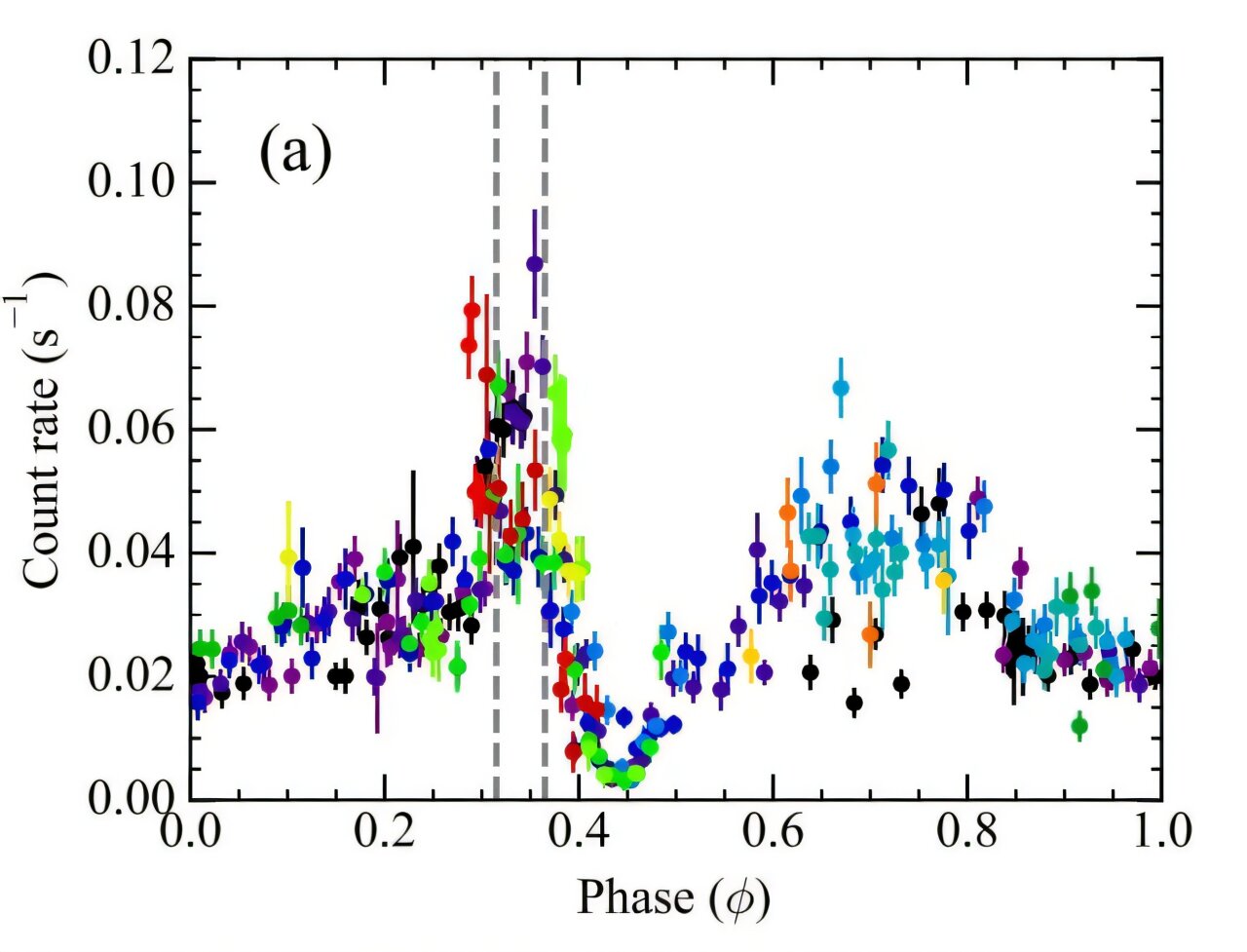
The 0.5–10 keV light curve of HESS J0632+057 measured by Swift. Credit: arXiv (2025). DOI: 10.48550/arxiv.2507.23304
An international team of astronomers has performed multiwavelength observations of a gamma-ray binary system known as HESS J0632+057. Results of the observational campaign, presented July 31 on the pre-print server arXiv, shed more light on the nature of this binary.
Gamma-ray binaries consist of a massive OB-type star in orbit with a compact object like a neutron star or black hole. Some of them emit a significant amount of radiation in very high-energy (TeV) and are therefore known as TeV gamma-ray binaries (TGBs).
TGBs exhibit diverse high-energy phenomena driven by interactions between the two components. Given that these sources are extremely rare, astronomers are especially interested in exploring them in detail, which could help us better understand their mysterious nature.
HESS J0632+057 is a TGB discovered in 2007 at a distance of some 4,560 light years away from Earth. The system contains a Be-type star with a decretion disk, while the nature of the compact object remains uncertain. However, previous observations suggest that the companion object is a rotating neutron star emitting periodic radio pulses, therefore a pulsar. The orbital period of the binary is estimated to be about 310–320 days.
Moreover, previous studies have found that HESS J0632+057 exhibits X-ray and TeV flares interpreted as a signature of pulsar-disk interaction.
In order to shed more light on this interaction and X-ray emission from this source, a group of astronomers led by Jaegeun Park of the Chungbuk National University in South Korea, carried out a multiwavelength observational campaign of HESS J0632+057 utilizing the Southern African Large Telescope (SALT), Swift spacecraft, Nuclear Spectroscopic Telescope Array (NuSTAR), and the Very Energetic Radiation Imaging Telescope Array System (VERITAS).
The new observations found orbital variability in the X-ray spectrum of HESS J0632+057, including increased X-ray absorption at the orbital phase interval of 0.3–0.4, which is consistent with archival data. The results generally suggest the pulsar’s passage through the disk during this interval.
Based on the collected data, the phase widths for the flux and hydrogen column density enhancements were measured to be approximately 0.1. This indicates a disk opening angle of about 36 degrees for an assumed circular orbit.
The study found that the X-ray flux during the interaction phase exhibited both short and long-term variability. The astronomers explain that the long-term variability suggests changes in the disk size, while short-term variability, on a timescale of less than three days, may be caused by clumpiness of the disk material.
The observations also identified TeV flares from HESS J0632+057 within the interaction phase. The authors of the paper note that these flares appear to be driven by multiple mechanisms.
Written for you by our author Tomasz Nowakowski, edited by Sadie Harley, and fact-checked and reviewed by Robert Egan—this article is the result of careful human work. We rely on readers like you to keep independent science journalism alive.
If this reporting matters to you,
please consider a donation (especially monthly).
You’ll get an ad-free account as a thank-you.
More information:
Jaegeun Park et al, Multi-wavelength Study of HESS J0632+057: New Insights into Pulsar-Disk Interaction, arXiv (2025). DOI: 10.48550/arxiv.2507.23304
Journal information:
arXiv
© 2025 Science X Network
Citation:
Multiwavelength observations investigate the nature of a TeV gamma-ray binary (2025, August 7)
retrieved 8 August 2025
from https://phys.org/news/2025-08-multiwavelength-nature-tev-gamma-ray.html
This document is subject to copyright. Apart from any fair dealing for the purpose of private study or research, no
part may be reproduced without the written permission. The content is provided for information purposes only.
